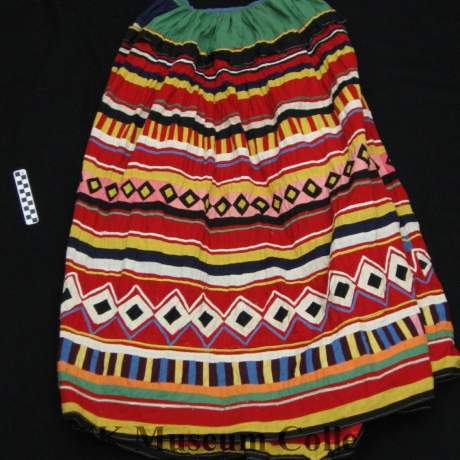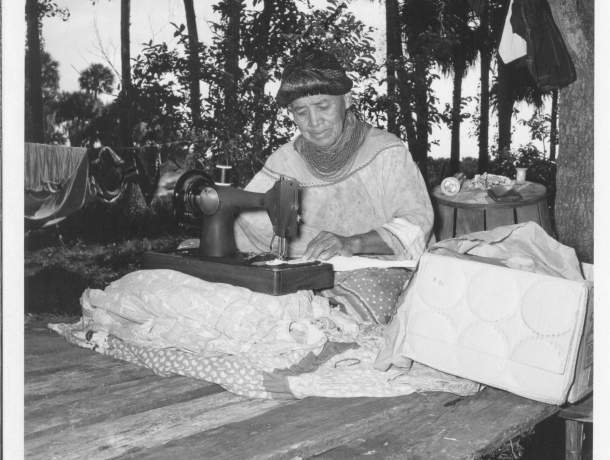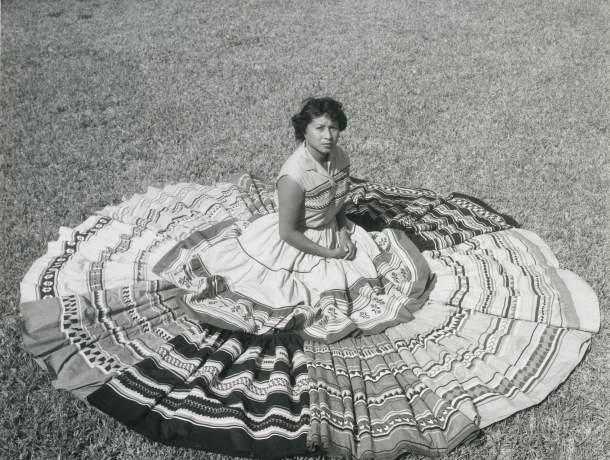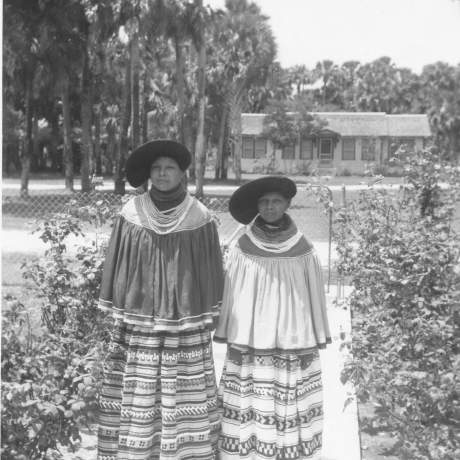History
The introduction of the sewing machine in 1890s was essential to the eventual development of patchwork. During this era, the Seminoles lived in relative seclusion for over two generations. Traders answered their few modest needs not obtained in the Everglades. Among other things these men supplied calico cloth and ribbon, which were the primary materials for Seminole clothing. This older style is represented through much of the Ah-Tah-Thi-Ki Museum’s permanent exhibits.
The sewing machine revolutionized the lives of Seminole women the way it revolutionized the lives of other women. It took a painstaking and time-consuming task and made it quicker and easier, freeing many women to express themselves more creatively. In the earliest known pieces, around World War I, patchwork is shown in one to three bands in articles of clothing that are mostly appliquéd .The common explanation is that Seminole women suffered like all other Americans through rationing. The ink for calico was a German export and became particularly difficult to come by. Using ingenuity, scraps and their sewing machine, Seminole women created their own designs instead. What was created was a truly unique technique and style.
What was initially a response to the loss of calico then through the 1920s and 1930s became a shift to more patchwork, while the appliqué work played a supporting role. The introduction of ric-rac ultimately replaced appliquéd ribbon and strips. Today, it is rare to see appliqué work in modern patchwork clothing.



